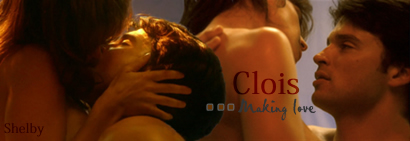Smallville – ¿Dónde lo próximo?
Por Samuel Roberts 20 de Mayo, 2010
There’s something very final sounding about a tenth season. The show in question, whatever it may be, has reached double digits. Almost an entire decade of our lives has passed since we saw it begin. Such a feat seems almost inhibiting to most TV dramas – most run for no more than five – as every possible romance subplot and storytelling variable will have been touched upon at some point or another, while onlookers assume the show has ran thin creatively as a by-product of its time on the air.
For Smallville, a far greater problem lies in the shadows. As a show that was originally supposed to be Superman: The Early Years, we’re getting knee deep in the continuity of both Superman and the DC Universe, to the point where the show is essentially rewriting both through its own words. A series that was once Clark Kent, schoolboy with a heroic secret, now sees the handsome hero as a journalist at a Daily Planet, while romantically entangled with the snappy Lois Lane. The only item missing from this formula is the famous red, blue and yellow spandex outfit. If this is Superman: The Early Years, it’s difficult to see where else it can go as Smallville rolls into its tenth year.
The show’s current executive producer and co-showrunner, Brian Peterson, who took over from series developers Al Gough and Miles Millar at the start of season eight (with fellow exec producer Kelly Souders), embraces the results of this direction. “The vision we have this year is that as Clark is getting closer to the icon that is or will be Superman, we’re trying to merge his world a little more into that world, so it’s very intentional that we’re bringing more and more DC characters in. That’s been the idea behind bringing in people like Roulette, the Wonder Twins, and the Justice Society members.”
Indeed, ever since the show introduced The Flash variant Bart Allen in the excellent season four episode ‘Run’, Smallville has gained traction and confidence in its depiction of the wider DC universe. Notable characters that have popped up from time to time include Teen Titans’ Cyborg, Black Canary, Green Arrow (who became a series regular a couple of years ago), Aquaman, Zatanna, JSA and even the Legion of Superheroes. Short of Batman and Green Lantern (neither of whom will likely ever appear due to Warner’s ongoing film franchises), the show is digging quite deep into the densely overpopulated ranks of the DCU.
Season ten is only going to go further in this direction, but there are potential drawbacks. Perhaps Smallville is losing its sense of wonder in this relentless incorporation of non-Superman characters, in exploring areas on the periphery of the character’s relevance. Part of the show’s charm in seasons 1-5 of Smallville was the fact that the Superman alter ego of Clark Kent seemed like a distant. Now, we’re so thick in it, the show might as well be redubbed Lois & Clark: The Early Years. We’re basically watching something entirely different to the Smallville we were five years ago, and whether that’s a positive or a negative is certainly debatable.
So much of this transformation is down to two factors – introducing more and more DC characters to the mix is part of it, sure, but the other aspect is deepening the relationship between the characters, the latter of which seems constructed to make the audience forget the languishing on-off Clark/Lana relationship, the show’s bane for so many seasons. Peterson discusses the show’s current approach: “We try and walk the balance between the mythos and also our relationships we have, because we have so many strong, great relationships going on in Smallville.”
Building on the Clark/Lois dynamic has been difficult, as there is a sense that it clashes with the show’s established mythology. “We’re trying really hard to straddle the line of the Lois and Clark relationship while keeping all of the great history that has gone on with Chloe and all of our previous characters that have been on our show. Which has always been a really tough tightrope to walk.”
Peterson feels that capturing the essence of the DCU on a weekly basis is an even tougher challenge, however. “I’m not going to lie: bringing high-level characters like Hawkman and Doctor Fate to the screen is a concern every time we do it,” he says. “We want to do it right and make them feel right and valid in this world. A lot of time and effort goes into working on the costumes, working on the casting, working on how we’re going to light them. The first day we got dailies in on Absolute Justice, it was amazing how they just come to life and seem to work in our universe.
“I think a lot of that is because we’ve tested out characters over the season, we have tested out Zatanna and characters like the Persuader and the Legion. After doing episodes like those and seeing them be pretty successful and learning lessons from those, I think everybody was ready for this challenge and every single department stepped up to make it real.”
Indeed, Absolute Justice – treated like a TV movie by network The CW, which gained the show extra ratings clout – could be seen as a template for the kind of episodes Smallville will be doing more of in season ten. Peterson praises the creative and narrative impact the episode (penned by the superbly talented DC writer, Geoff Johns) had on the show: “We really tried to find a way for that group to fit organically into the story we’re telling this season. It illustrates some pretty major things in Clark’s life and journey this season.
“A lot of it is about leadership and Clark having to become a leader of his people once he realizes there’s Kandorians on earth. And Clark trying to figure out the leadership of what will become the Justice League. So all of the lessons that the JSA learned in the past, will inform how Clark starts to work with his new League and all of the Kandorians.” Indeed, with many aspects of the Superman lore now touched upon or exhausted – including the Luthors, Doomsday, the Kents and the oddly deceased Jimmy Olsen, to name but a few – it seems that tapping into these higher-concept aspects of the Superman’s mythology is the way to go. It’s easy to forget that the show is off-continuity in so many ways; Jimmy Olsen, in particular, never died in the comic books (in current continuity, anyway), but he’s gone. Season ten could, theoretically, kill off a number of major characters as the show moves towards its natural end point, something that can’t be too far away at this point.
http://www.scifinow.co.uk/magazine-issu ... here-next/















